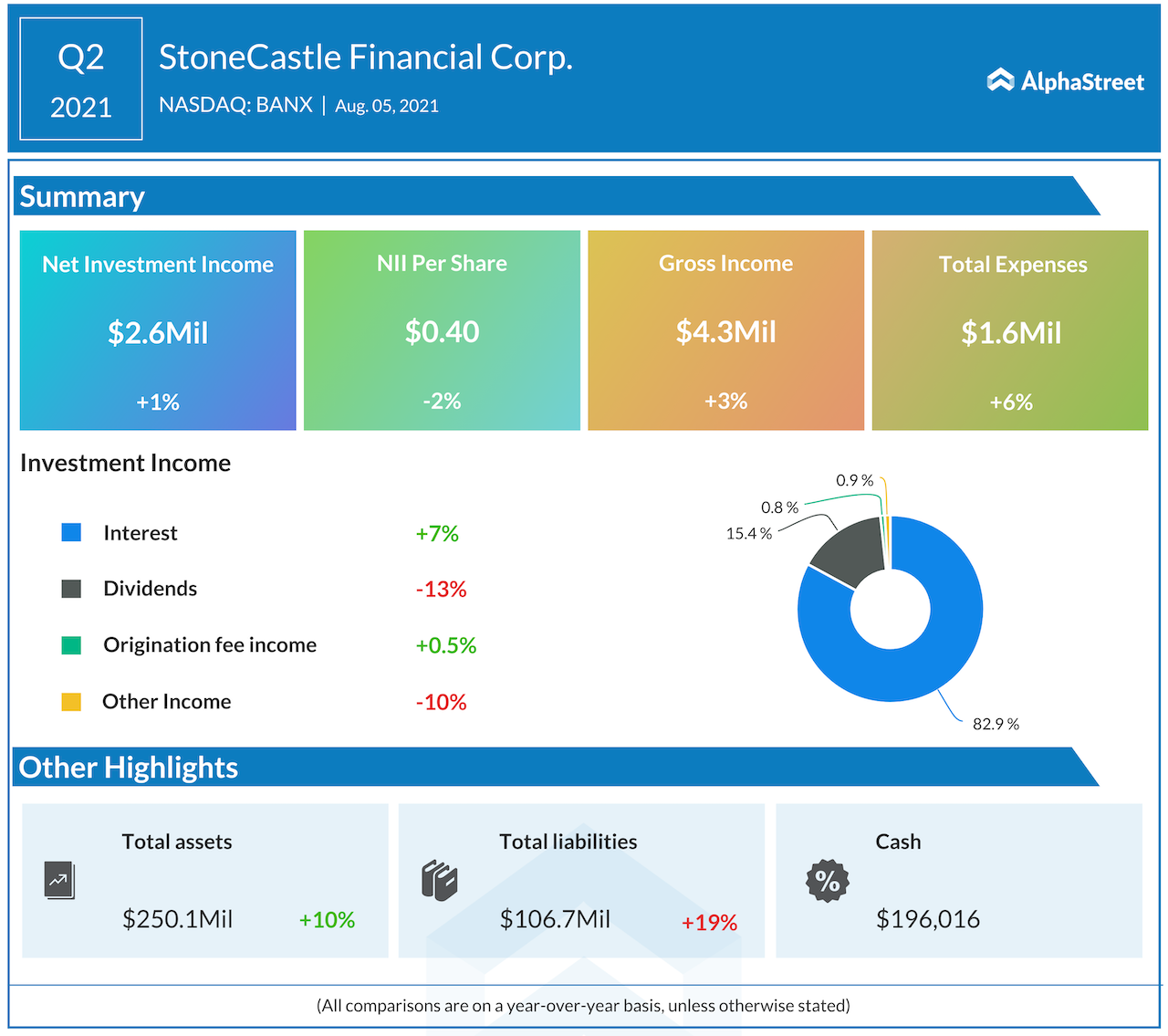Categories Finance, Interviews
StoneCastle Financial is focused on income generation, capital preservation, and credit quality: CEO
In an interview with Arjun Vijay of AlphaStreet, CEO Sanjai Bhonsle elaborates on the firm’s investment ideology, risk strategy, and NAV trend

Give us a quick overview of StoneCastle Financial Corp, touching upon your portfolio investments and asset mix.
StoneCastle Financial Corp., which trades under the symbol BANX, is a closed-end investment company. Today it’s focused on making passive, non-control investments and banking-related securities. The company’s investment objective is focused on income generation, capital preservation, and providing risk-adjusted returns.
Another company strategy is to mitigate risk by making investments in higher-quality assets that generally mirror investment-grade risk. Today StoneCastle trades at a 7% dividend yield and its last published NAV was $22.05.
What can you tell us about the company’s credit quality and what’s your risk-mitigation strategy?
We view the company’s credit quality today as pretty strong. We try to match the risk profile within StoneCastle approximate to investment-grade risk. And if you look at these securities in our portfolio, they are generally issued by banks that are themselves, rated investment grade. These securities are issued by some pretty sound financial institutions which run the spectrum of community banks to money center banks.
What can you tell us about the impact of rising interest rates on StoneCastle’s portfolio?
If you look at the portfolio today, about 60% of our gross assets within the company are in floating-rate securities. It’s one of the positive changes that have taken place since ArrowMark took over the day-to-day management of StoneCastle. Prior to that it was mostly fixed rate. Banks tend to perform well during periods of increasing interest rates.

How do you see your NAV trends? And what are your observations there?
A positive feature of StoneCastle is that the NAV has been fairly stable. Obviously, during the pandemic, it took a bit of a dip. Excluding that, the NAV has ranged between $21 and $22 and so is fairly stable. Another thing of note is we do not self-mark any of the assets within the company. The asset values are all third-party broker quotes and so there’s a lot of transparency into the liquidity profile of these also.
ALSO READ Wellteq CEO Scott Montgomery: Our platform aimed at coaching people towards better health habits
Can you expound a bit on your observations on how community banks, in particular, have endured the pandemic period and how smooth the reopening of the economy was for StoneCastle?
Community banks are very important in supporting the local economies, especially the smaller towns. Also, one of the structural features for community banks that has changed meaningfully since the great financial crisis is that their risk profile has changed meaningfully for the better. They’ve gotten a much more conservative balance sheet. The Tier-1 capital ratios on average for community banks is around 13%, meaningfully above the minimum required amounts. So, the banks actually went into the Covid period with some strong liquidity and fairly conservative balance sheets.
What happened during the pandemic also is the PPP loan program, is that community bank earnings were positively impacted by the underwriting fees that they charged to issue loans.
Also from a credit reserve perspective, bank management teams actually did increase their reserves, but defaults did not spike as most people thought they would. And so, what you see today is community banks, or any type of banks that are well managed, are no longer reversing those reserves. And so given that, banks are fairly active in supporting their local businesses and the local communities.
ALSO READ Real Luck Group CEO Thomas Rosander on esports betting market and the regulatory landscape
What would you like to tell people who are considering investing in the company?
Let’s look at the company from a couple of angles. One is that the company today invests in bank-related assets including community banks which highlights the impact portion of the company.
One of the things that I didn’t mention during the pandemic is if you’re a minority-owned business or a woman-owned business, 70% of those businesses got their PPP loans via community banks. And if you’re a veteran-owned business, about 60% of those types of businesses got their loans from a community bank. So, you can see how impactful community banks were in supporting these businesses during some of the toughest times. Again, from an impact perspective, our company registers fairly well.
If you are to look from an economic perspective also, the company is focused on income generation, capital preservation, and credit quality. And if you are to look at the financials of the company, it has really exhibited a lot of stability in terms of income generation since we took over the management back in February last year.
We’ve been out earning our dividend which is a function of being able to increase the gross assets within the company. And from a capital preservation perspective, StoneCastle has a high credit quality portfolio as exhibited in terms of a stable NAV.
_________
Most Popular
Trxade Health Inc. (NASDAQ: MEDS) Q1 2024 Research Summary
Trxade Health, Inc. (NASDAQ: MEDS) is a drug procurement and delivery platform that digitalizes the retail pharmacy experience. The company has a growing network of suppliers and partnerships with independent
Earnings Preview: Walmart (WMT) expected to report sales and profit gains in Q1
Over the years, Walmart Inc. (NYSE: WMT) has constantly diversified while maintaining its dominance in the retail world. The company is preparing to report financial results for the first three
After a positive year, what’s in the cards for Electronic Arts (EA) in FY25
Electronic Arts (NASDAQ: EA) ended fiscal 2024 on a mixed note, reporting lower revenues and improved bottom-line performance for the fourth quarter. The stock declined following the announcement as earnings